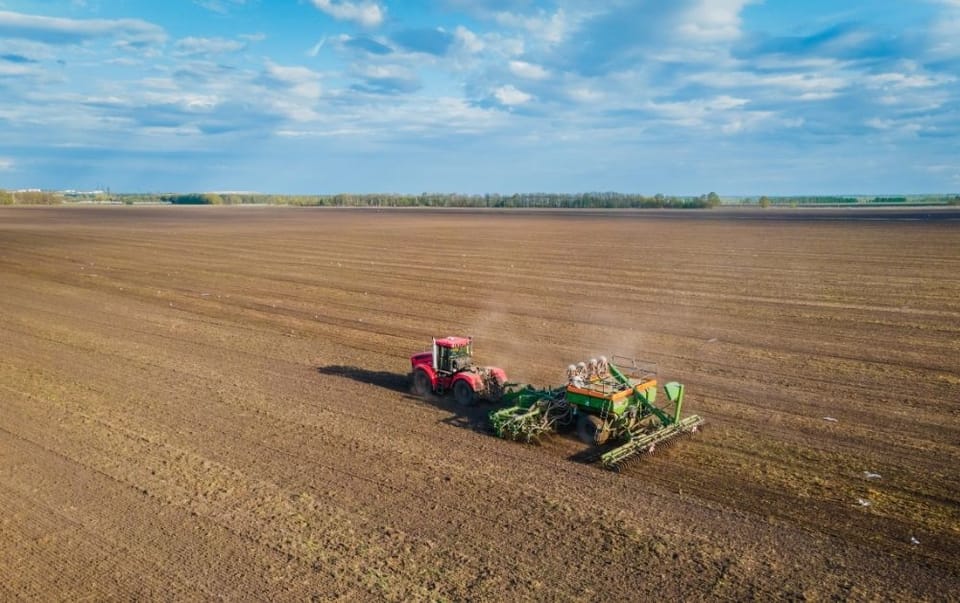China, Argentina See Uptick in Corn Production Estimates; Regenerative Agriculture Draws VC Investments

Sign up for Ag Commodities Focus: Stay ahead of the curve on ag commodities trends.
Good morning. Below is a roundup of last week's developments in the agriculture sector.
Rain Boosts Argentina's 2023/24 Soybean and Corn Crop Forecasts
Argentina's soybean and corn harvests were upgraded thanks to recent rainfall, improving the outlook for the South American agricultural giant. The Buenos Aires Grains Exchange now expects 52.5 million tons of soybeans and 56.5 million tons of corn, exceeding earlier forecasts. Increased soil moisture is credited for the boost. This marks a promising turn after three years of drought, with soybean farmers anticipating a fivefold increase over last year's yield. However, rain is crucial in the coming weeks to secure these optimistic projections.
A major global supplier of processed soybeans and a significant exporter of corn and wheat, Argentina could see economic benefits from these improved harvests. The Rosario Grains Exchange noted the positive impact of recent rains in reversing the effects of a three-year drought, particularly for soybean farmers. However, some regions still require more rain to sustain these optimistic projections, especially with high temperatures on the horizon. The new government under President Javier Milei is looking to increase revenue from the agricultural sector by raising export taxes on key grains. This move comes as Argentina faces economic challenges, including high inflation. (Source: Reuters)
Regenerative Agriculture Sparks VC Boom But Questions Linger
Venture capitalists are pouring money into regenerative agriculture startups, drawn by its potential to improve soil health, biodiversity, and carbon sequestration. Investment soared by 46% between 2021 and 2023, reaching $1.4 billion, as reported by the Financial Times. Food giants like Nestlé, Unilever, and Danone are incorporating regenerative agriculture into their sustainability plans. Startups are developing technologies, particularly in carbon credit issuance, to make this agriculture financially viable.
While tech plays a role in monitoring and verification, experts warn that its financial upside for farmers remains unclear. Practices favoring soil health often sacrifice immediate profit margins, clashing with traditional VC models focused on rapid returns. Concerns also exist around "greenwashing" - companies adopting the regenerative label without making substantial changes. (Source: Financial Times)
China's Corn Output Estimates Jumped
The corn production estimates for China have been increased by 4.2% to 288.8 million tonnes, fueled by a larger planted area and heavier rainfall, according to a recent USDA report. This bumper crop is expected to lead to increased domestic consumption, primarily in feed rations and industrial uses like ethanol production. Corn imports are projected to fall by 3 million tonnes compared to previous estimates, reflecting the abundant local supply and lower prices.
The increase in China's corn production is significant for the global grain market. The higher domestic production is likely to reduce China's reliance on imported corn, impacting global trade dynamics. The shift in corn utilization towards more local supply could affect international corn markets, particularly exporters to China. (Source: World Grains Council)
Ag Market Update
What happened: Grain and oilseed prices edged higher this past week.
Key drivers:
- South American weather: Potential impact on upcoming crop sizes.
- U.S. crop profitability: Decides planting intentions in the coming months.
- Brazil's weather forecast: Worsening forecast could support commodity prices.
Market sentiment: Commitment of Traders (COT) report shows managed money funds as net sellers in soybeans and soybean meal. Net short position in soybeans reached 90,000 contracts.
Geopolitical risk lingers: Difficulty in securing war risk insurance is disrupting commodity flows from the Red Sea. Escalating attacks in the region also pose a threat to the global supply chain. (Source: CME Group)